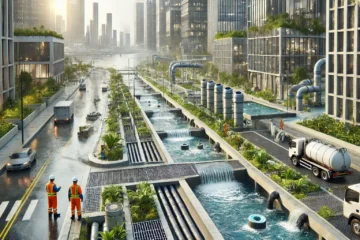Introduction
Electrical construction and maintenance is a critical aspect of modern society, powering our homes, businesses, and infrastructure. From the initial blueprint to the final inspection, the process involves a meticulous approach to ensure safety, efficiency, and compliance with industry standards. In this blog post, we delve into the intricacies of this field, exploring the key stages, challenges, and best practices.
Key Stages in Electrical Construction and Maintenance
- Design and Planning:
- Conceptualization: The initial phase involves understanding the project’s scope, requirements, and specific needs.
- Design: Electrical engineers create detailed blueprints, schematics, and wiring diagrams to guide the construction process.
- Material Selection: Choosing the right materials, including cables, conduits, switches, and outlets, is crucial for optimal performance and safety.
- Installation and Wiring:
- Site Preparation: The construction site is prepared, ensuring proper safety measures are in place.
- Wiring: Conductors are carefully routed and connected to various electrical components, adhering to electrical codes and regulations.
- Equipment Installation: Electrical equipment, such as transformers, circuit breakers, and panel boards, is installed and configured.
- Testing and Commissioning:
- Functional Testing: Rigorous testing is conducted to verify the system’s functionality and identify any potential issues.
- Safety Inspections: Safety inspections ensure compliance with electrical safety standards and regulations.
- Commissioning: The system is officially activated, and final adjustments are made to optimize performance.
- Maintenance and Troubleshooting:
- Preventive Maintenance: Regular inspections, cleaning, and lubrication of electrical equipment help prevent failures and extend its lifespan.
- Corrective Maintenance: Addressing issues promptly, such as repairing faulty wiring or replacing damaged components, is essential.
- Troubleshooting: Identifying and resolving electrical problems requires expertise and advanced diagnostic tools.
Challenges in Electrical Construction and Maintenance
- Complex Regulations: Adhering to ever-evolving electrical codes and standards can be challenging.
- Safety Risks: Working with electricity poses inherent risks, necessitating strict safety protocols.
- Technological Advancements: Keeping up with the latest technologies and industry trends is crucial.
- Aging Infrastructure: Maintaining aging electrical systems requires careful planning and investment.
Best Practices for Electrical Construction and Maintenance
- Hire Qualified Professionals: Employ experienced electricians and engineers to ensure quality workmanship.
- Prioritize Safety: Adhere to safety guidelines, use personal protective equipment, and conduct regular safety audits.
- Invest in Quality Materials: Using high-quality materials can significantly improve the system’s reliability and longevity.
- Regular Maintenance: Implement a comprehensive maintenance schedule to prevent breakdowns and costly repairs.
- Stay Updated: Keep abreast of industry advancements and emerging technologies.
- Document Everything: Maintain detailed records of installations, maintenance activities, and troubleshooting procedures.
Conclusion
Electrical construction and maintenance is a multifaceted field that demands precision, expertise, and a commitment to safety. By following best practices and staying informed about industry trends, professionals can ensure the reliable and efficient operation of electrical systems, powering our modern world.


